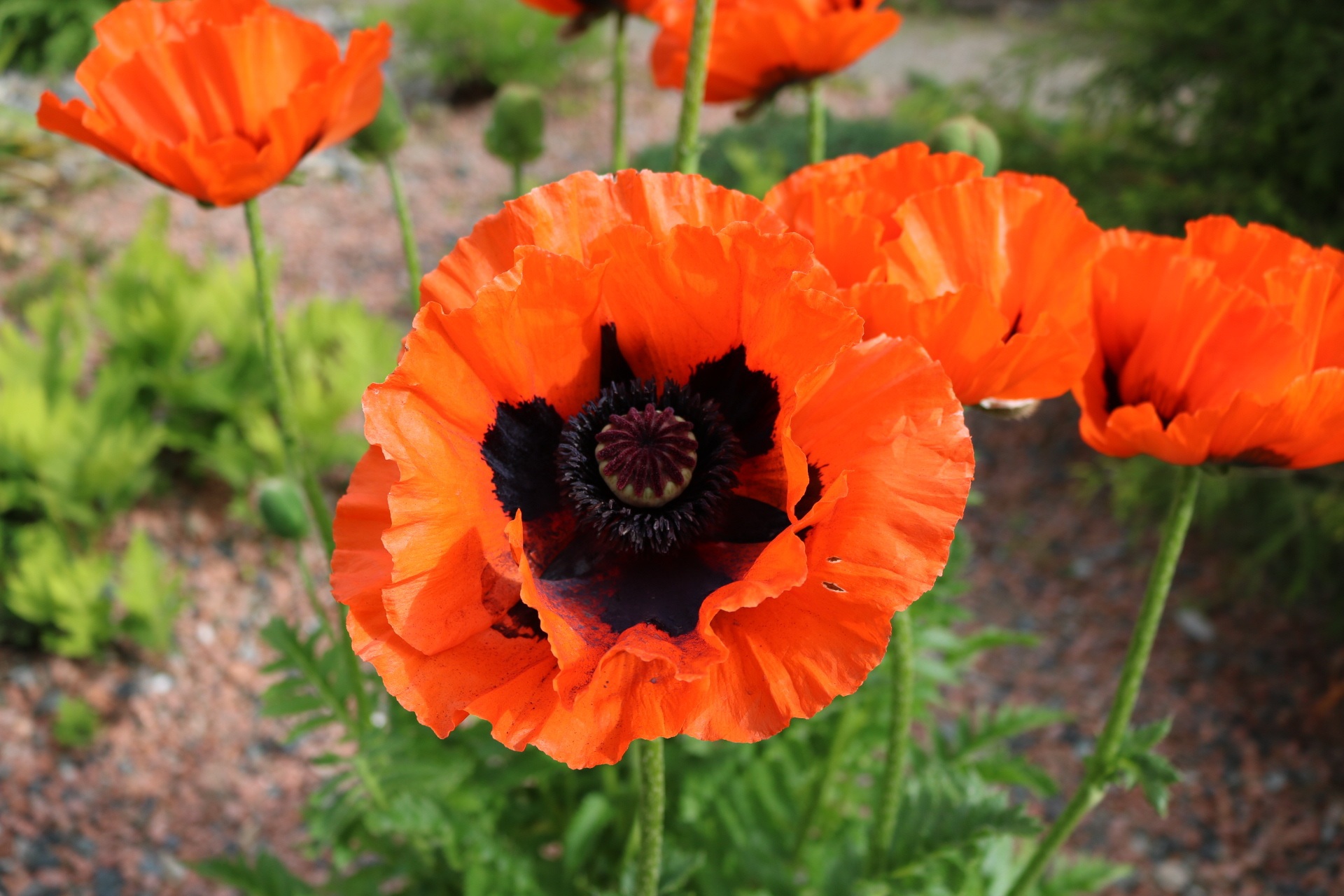
Photo Credit
ppuDi/Shutterstock
Subhead
Planting, Growing, and Caring for Poppies
Read Next
Types
With so many varieties, choosing which to plant can be exhausting. Here are a few we like, and if you can’t decide, many vendors sell a seed mix.
- Common poppy, also called Flanders, American Legion, or Red corn poppy (Papaver rhoeas). This is the famous red flower worn for remembrance in Canada, the United States, the UK, and other countries. Stunning in extensive plantings, they are not well-suited to breezy locations.

Image: Common red poppy. Credit: Alex Manders/Shutterstock
- ‘Oriental Scarlet’ is a perennial poppy (P. orientale) with unique 6-inch-diameter orange blooms on strong stems. The foliage will die back in summer, so interplant with other flowers to avoid a bare spot in your garden. Check out this page from NC State Extension for more information about Oriental poppies.

Image: Oriental poppy. Credit: Coulanges/Shutterstock
- ‘Hungarian breadseed’ is an annual with stunning lavender and purple flowers and dark blue or black seeds for baking.

Image: Hungarian Breadseed. Credit: AnnuO/Shutterstock
- Shirley poppies are direct descendants of the Flanders or common poppy but were bred to provide a mix of pinks, reds, and even an occasional white. Economical to plant en masse, they are annual and self-seeding.

Image: Shirley poppies. Credit: Shutterstock.
Gardening Products
More Like This
I'm trying to figure out if buying seeds and planting them strictly for decorative purposes is illegal or not (Delaware, USA). I keep getting conflicting information especially about the Common Poppy. I just want to add new flowers to my gardens and Google seems to think otherwise. Any help would be appreciated.
I found this article very informative...I enjoyed every second! I'm from Louisiana and I'm going to grow me some poppies!!!
Great article, thank you!
Very helpful. Thank you!











Comments